History of La Bastide-Puylaurent |

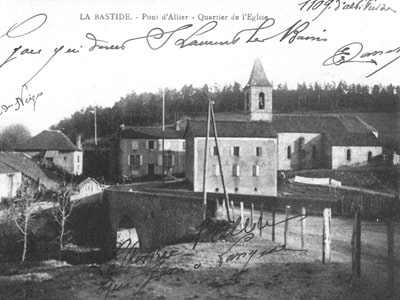 La Bastide-Puylaurent, a name that evokes both the softness and the harshness of the mountains, the charm and the history of a village. A village that has not always carried this name, nor occupied the same location.
La Bastide-Puylaurent, a name that evokes both the softness and the harshness of the mountains, the charm and the history of a village. A village that has not always carried this name, nor occupied the same location.
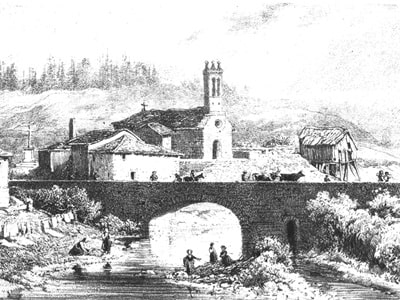 During the time of the Revolution, it was Puylaurent that was the chief town of the commune, a hamlet perched on the heights, overlooking the valley of the Allier. But in 1917, the village's destiny changed when the President of the Republic signed a decree transferring the seat of the town hall to the hamlet of La Bastide, located lower down by the river. This marked the beginning of a new era for the commune, which then took its current name.
During the time of the Revolution, it was Puylaurent that was the chief town of the commune, a hamlet perched on the heights, overlooking the valley of the Allier. But in 1917, the village's destiny changed when the President of the Republic signed a decree transferring the seat of the town hall to the hamlet of La Bastide, located lower down by the river. This marked the beginning of a new era for the commune, which then took its current name.
But to understand the history of La Bastide-Puylaurent, one must go back even further, to the early 16th century, when La Bastide was just a modest village of seven or eight houses built on the right bank of the Allier. On the other side of the bridge, on the left bank, lay Gevaudan, a wild and mysterious land, where the family Bastide lived, who owned a farm called Trouillas. Some said it was they who had given their name to the village, but no one was sure.
Further on, beyond the stream of Rieufret, lay Vivarais, a more cheerful and fertile region, where beautiful homes stood, such as those of Barrial, Valentins, Bresson, Astruc, Rieu, Hebrard, and Chambonnet. These were the oldest and most respected families in the village, who had shared the lands and flocks for generations. This is how the village appeared in the terriers of 1609, those records where the rights and duties of the inhabitants towards their lords were recorded. And it remained almost unchanged, except for a few new constructions, until the cadastral plan of 1810, which established the boundaries and names of the parcels.
But La Bastide was not isolated from the world. It was crossed by an ancient Roman road, the Regordane, which connected Saint-Gilles in Gard to Le Puy-en-Velay in Haute-Loire. It was a road frequented by pilgrims, merchants, and transhumants, who stopped at the inns of La Bastide to rest and refresh themselves. La Bastide then depended on the parish of Chasserades, where the church and cemetery were located.
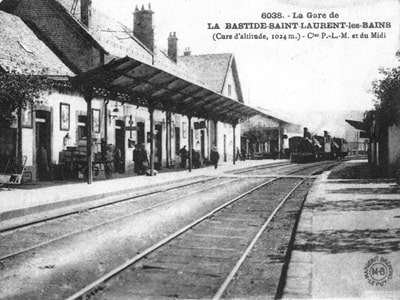 Around La Bastide, there were also other hamlets and farms, scattered in the valleys of the Allier and Rieufret. There were the Huttes, where the Barrel and Ranc families lived, Courege, Bories, Compan, and Felgere, which were "considerable houses," and Malataverne, a hamlet of two houses that has now disappeared. All of these places had their own history, secrets, and legends.
Around La Bastide, there were also other hamlets and farms, scattered in the valleys of the Allier and Rieufret. There were the Huttes, where the Barrel and Ranc families lived, Courege, Bories, Compan, and Felgere, which were "considerable houses," and Malataverne, a hamlet of two houses that has now disappeared. All of these places had their own history, secrets, and legends.
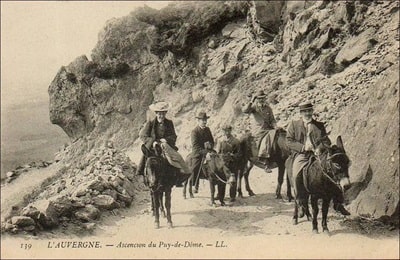 And then there was Saint-Thomas de la Souche, a priory founded by the monks of Tornac, near Anduze, who had large herds that went up to Gevaudan in the summer. It was a place of prayer and rest, near a spring that flowed by the Regordane. But nothing remains of this priory, except for a rustic cross across from the current cemetery.
And then there was Saint-Thomas de la Souche, a priory founded by the monks of Tornac, near Anduze, who had large herds that went up to Gevaudan in the summer. It was a place of prayer and rest, near a spring that flowed by the Regordane. But nothing remains of this priory, except for a rustic cross across from the current cemetery.
In 1728, Abbot Robert, the priest of Puylaurent, visited the ruins of an ancient chapel and a hospital, founded in the Middle Ages by monks of the Tornac order. There he discovered traces of a forgotten past, where the religious welcomed and cared for travelers, shepherds, muleteers, and transhumants who took the steep paths of the region. He also saw the remains of a cemetery, where the deceased who had found a final refuge there rested. He carefully noted the dimensions of the buildings and the land, as well as the revenues enjoyed by the monks, derived from donations, tithes, and the surrounding lands.
The chapel and the hospital were inseparable, one justifying the other. The deeds of notaries testified to their dual vocation, spiritual and temporal. Sometimes only the chapel was mentioned, sometimes both, sometimes even the priory and the hospital. But what did the word hospital mean? It could be translated as lodging, inn, but that would reduce the scope of the monks' work. Indeed, the prior of the chapel and hospital was always the infirmarian of the monastery of Tornac. This implied that there was an organization for care to be provided, even if it was rudimentary or temporary. The hospital still existed in 1636, and the infirmarian of Tornac was its official responsible.
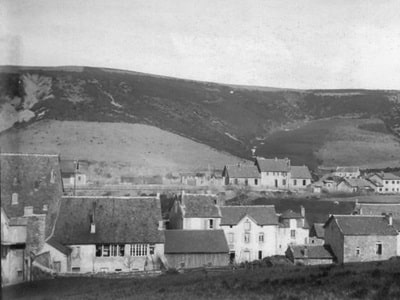 More than one hundred and fifty years later, La Bastide-Puylaurent became the scene of a dramatic episode of the French Revolution: the conspiracy of the Comte de Saillans. This nobleman, originally from Dauphine, had conceived a bold plan to overthrow the republican regime and restore the monarchy. He wanted to raise all of southern France, from the Pyrenees to the Rhône, and form a vast army that would march north, supported by the Spaniards and emigrants. He hoped to join the royalist forces of Vendee, Brittany, and the Rhine.
More than one hundred and fifty years later, La Bastide-Puylaurent became the scene of a dramatic episode of the French Revolution: the conspiracy of the Comte de Saillans. This nobleman, originally from Dauphine, had conceived a bold plan to overthrow the republican regime and restore the monarchy. He wanted to raise all of southern France, from the Pyrenees to the Rhône, and form a vast army that would march north, supported by the Spaniards and emigrants. He hoped to join the royalist forces of Vendee, Brittany, and the Rhine.
 On May 19, 1792, he went to La Bastide, to the inn of Pierre Combe, where he met the members of the royalist committee of Jales. Among them were Abbot Claude Allier, prior of Chambonas, and Joseph-Marie Chabalier, a resident of Puylaurent. They brought him their support and adherence to his project.
On May 19, 1792, he went to La Bastide, to the inn of Pierre Combe, where he met the members of the royalist committee of Jales. Among them were Abbot Claude Allier, prior of Chambonas, and Joseph-Marie Chabalier, a resident of Puylaurent. They brought him their support and adherence to his project.
In early June, the revolt broke out. The royalists attacked the castle of Bannes, where a republican garrison was located, and massacred some national guards in the village of Berrias. But these acts of violence only attracted the attention of the authorities, who sent troops to suppress the insurrection. The royalists were repelled from several towns and villages and were soon divided by internal dissension. Abbot Allier and the Comte de Saillans violently quarreled, accusing each other of treason.
On July 8, the republicans made the castle of Bannes surrender after a siege of several days. On July 12, they won the decisive battle of Jales, where the Comte de Saillans was killed. The conspiracy was over, and with it, the hope of the royalists of La Bastide-Puylaurent.
In 1940, while war raged in Europe, the Polish Red Cross created a welcome center for Polish refugees in La Bastide-Puylaurent, a small village in Lozere situated between the sources of the Allier and the Chassezac river. The center is established in two hotels, the Terminus and the Pins, which offer refuge and comfort to exiles fleeing the Nazi and Soviet occupation of their country.
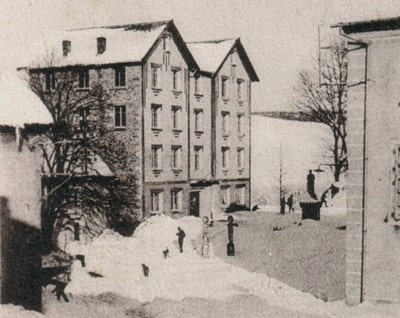 The center welcomes men, women, and children of all ages and backgrounds. Some are wounded or demobilized soldiers, others are persecuted or deported civilians.
The center welcomes men, women, and children of all ages and backgrounds. Some are wounded or demobilized soldiers, others are persecuted or deported civilians.
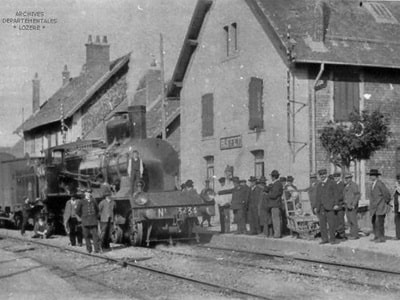 All have experienced fear, hunger, suffering, and separation. At the center, they find a bit of human warmth, solidarity, and hope. They benefit from medical care, food, clothing, and education. They also participate in cultural, sports, and religious activities. They form a close-knit community proud of its roots.
All have experienced fear, hunger, suffering, and separation. At the center, they find a bit of human warmth, solidarity, and hope. They benefit from medical care, food, clothing, and education. They also participate in cultural, sports, and religious activities. They form a close-knit community proud of its roots.
The center is run by Zbiggniev Malinoowki, a former officer of the Polish army, who dedicates himself wholeheartedly to the cause of his compatriots. He is assisted by French and Polish volunteers who show courage and generosity. The center is supported by local authorities who respect and protect the refugees. The center is also in contact with the Polish resistance, which fights against the invader.
But the center is not safe from danger. In 1942, the Vichy police issued an arrest warrant for Malinoowki, accusing him of being a "dangerous terrorist." The director of the center managed to escape the hunt, but he must hide and often change locations. In 1944, German troops invaded the free zone and occupied La Bastide-Puylaurent. They arrested 25 Polish refugees, whom they considered enemies and undesirables. They were forcibly sent to Paris and then to Königsberg in East Prussia, where they were exploited as slaves.
The Polish reception center in La Bastide-Puylaurent is a poignant testimony to the history of the Second World War, but also to the brotherhood between peoples. It illustrates the tragic and heroic fate of the Poles, who fought for their freedom and dignity.
Former holiday hotel with a garden along the Allier, L'Etoile Guest House is located in La Bastide-Puylaurent between Lozere, Ardeche, and the Cevennes in the mountains of Southern France. At the crossroads of GR®7, GR®70 Stevenson Path, GR®72, GR®700 Regordane Way, GR®470 Allier River springs and gorges, GRP® Cevenol, Ardechoise Mountains, Margeride. Numerous loop trails for hiking and one-day biking excursions. Ideal for a relaxing and hiking getaway.
Copyright©etoile.fr